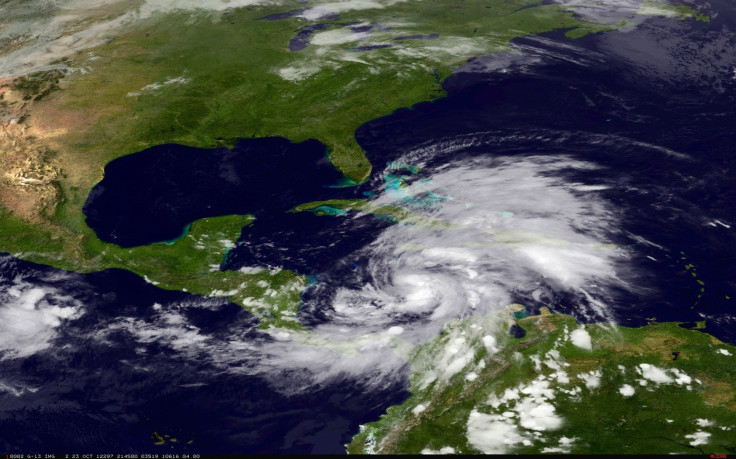Hurricane Sandy 2012: Tropical Storm Expected To Touch Ground In Jamaica Wednesday

Tropical Storm Sandy gained strength while headed to the south coast of Jamaica on Wednesday prompting officials to warn residents of the possibility that the weather system will most likely make landfall as a hurricane later in the day, the U.S. National Hurricane Center said.
Local authorities on the Caribbean island closed schools and prepared shelters to take in residents of flood-prone areas in the case of an emergency brought on by the hurricane.
The latest reports out of the NHC pinpoint Sandy centered about 120 miles south of Kingston, the Jamaican capital. The NHC further noted that as of Wednesday morning, the storm was moving north at 14 miles per hour (22 km per hour) with top sustained winds of 70 miles per hour.
A tropical storm watch has been issued for south Florida as a result of Sandy’s behavior. The storm's expected path will reportedly not take it into the Gulf of Mexico, where U.S. oil and gas operations are clustered.
A hurricane warning was in effect for both Jamaica and Cuba, although forecasters said Sandy is expected to be only a weak Category One hurricane on the five-step Saffir-Simpson scale of hurricane intensity, with winds topping out at 80 mph.
Computer graphics provided by the NHC show Sandy on a path that would take the potential hurricane across the middle of Jamaica near the capital, Kingston, and the popular north coast resort of Ocho Rios, before passing over eastern Cuba and losing hurricane strength as it reaches the Bahamas.
Forecasters are projecting that Sandy will dump as much as 6 to 12 inches of rain across parts of Jamaica, Haiti, the Dominican Republic and eastern Cuba, with as much as 20 inches possible in some places.
"These rains may produce life-threatening flash floods and mud slides ... especially in areas of mountainous terrain," the hurricane center warned.
A storm surge could also raise water levels on Jamaica's south and east coasts by 1 to 3 feet (one-third to 1 meter) above normal tide levels, it added, and as much as 4 to 7 feet above normal in the Bahamas on Friday.
© Copyright IBTimes 2024. All rights reserved.






















